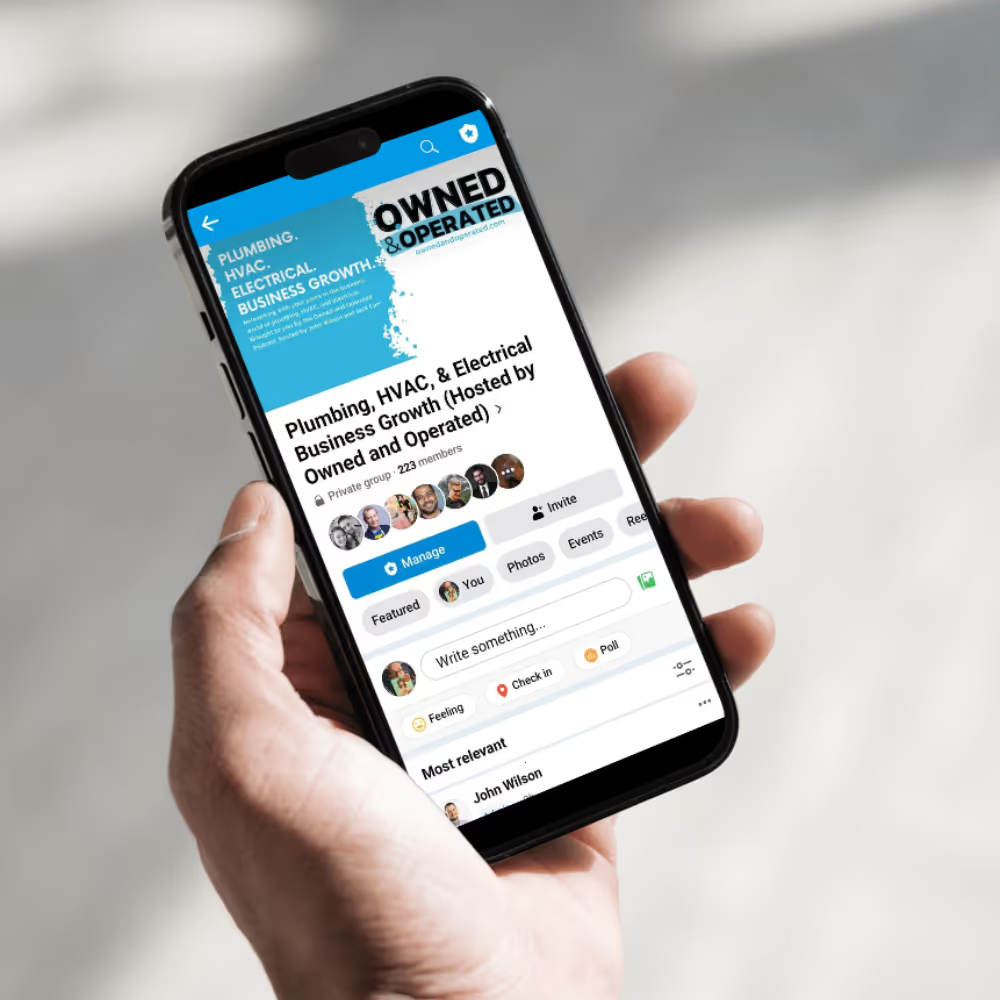Everyone wants their sales team to produce, but building one that consistently drives revenue is not about hiring a natural closer and waiting for the money to roll in.
Nope.
It is a system. A progression. Each step requires discipline, repetition, and accountability.
Here is how I build sales teams that perform.
Step #1: Have a Process
Early on, some calls landed and others did not. We had no idea why. That changed the moment we locked down a process and treated sales like a scientific method. Test, analyze, repeat. Reduce variables so you can isolate the issue.
- Use a proven framework.
- Do not rebuild from scratch.
- Customize scripts to your brand story, so trust and positioning are baked in.
Think in order of operations like a furnace diagnosis. If conversion is low, check the explore step.
Did we ask open-ended and lifestyle questions?
Did we walk the home?
Did we present enough options?
If price objections dominate, did we offer financing and a range of good-better-best choices.
The first year we formalized sales as a function, revenue grew 50 percent. You can do the same.
Take these steps now:
- Write SOPs and scripts that match your voice.
- Map your call into clear steps from greeting to close.
- Standardize options. Target three to four options per proposal.
- Bring up typical price range early to normalize budget talk.
- Bake financing into the script, not as an afterthought.
Step #2: Be Consistent
Training is a rhythm, not an event. We run sales training the same day and time, even if it means missing a few calls that morning. The misses are cheaper than the mistakes untrained reps repeat for weeks.
Inside the session, we role play real objections. It feels awkward for two reps, then nobody cares. We also open yesterday’s invoices. We review one that closed well and one that did not. The team gives feedback on the exact step where the customer was lost.
Another point of consideration: your call center is part of your sales operation. Include them in training because their words set up the field visit.
Now, do this:
- Calendar recurring training. Do not move it.
- Run skills practice with specific objections.
- Review real quotes and identify the failed step.
- Invite CSRs so the front of the funnel matches the field.
- Track themes from trainings to target the next agenda.
Step #3: Install Metrics and Make Them Visible
Sales is a game. Players need a scoreboard. We post scorecards on the wall and TVs, push numbers in Slack, and show live dashboards. Top performers know they are on top. Everyone else knows where they stand.
Measure in real time. Hourly and daily is better than monthly. Give clear targets per role. Closing rate, average ticket, calls run, options presented, and month-to-date performance. We also gamify with contests and badges for things like most water heaters or most furnaces sold.
This is how we went from small to big. You do not wait to measure until you are big. Measuring well is how you get big.
You can do the same by taking these steps:
- Publish role-specific targets and definitions of a win.
- Display live leaderboards in the shop and on mobile.
- Track options per visit and financing offers made.
- Celebrate wins publicly. Coach misses privately.
- Run short sprints with simple prizes to keep energy high.
Step #4: Inspect What You Expect
Processes and dashboards do not matter if no one checks adherence. We do ride-alongs at least once a month. We review recorded calls with tools that mark key moments, then debrief where the call turned. We hold weekly KPI check-ins with the rep and their manager.
Use the diagnosis to shape training. If price is the top objection, prove whether the rep actually offered financing and multiple options. When plumbing heard “too expensive” 30 times in a week, we found most reps offered only two options and rarely mentioned financing. Training shifted to options and payment plans, and results improved.
Here’s your cheatsheet:
- Schedule ride-alongs and document one insight per visit.
- Review two calls per rep per week. One win and one loss.
- Tie each coaching note to a process step, not a vague trait.
- Assign a single action to practice before the next check-in.
- Reassess team themes weekly and update the training plan.
The Lesson
Sales success is not all about hiring a superstar. It is a system you can scale across five, ten, or fifty reps.
- Build the process.
- Train it consistently.
- Measure everything.
- Inspect what you expect.
Ready to build your sales team the right way? Watch this podcast episode.


.png)





.avif)
